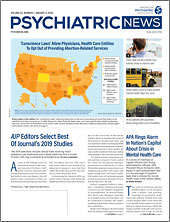The Federal Communications Commission (FCC) unanimously voted to proceed with a proposal to designate 988 as the national, three-digit number for the National Suicide Prevention Lifeline administered by the Substance Abuse and Mental Health Services Administration (SAMHSA).
Major challenges to moving forward, however, include handling increases in call volume, obtaining sufficient funding, and ensuring data-driven improvement.
The vote moves the proposal into a public comment period, after which the FCC will issue a final rule. It could take up to 18 months before the three-digit number becomes operable. Last August, the FCC sent a report to Congress asserting that a three-digit number would make it easier for individuals in crisis to access potentially lifesaving resources. The current toll-free phone number for the National Suicide Prevention Lifeline, 1-800-273-TALK (8255), may be difficult to remember in times of crisis. The report was mandated by the National Suicide Hotline Improvement Act of 2018.
“Suicidal ideation is a symptom of a disorder. This effort to destigmatize mental illness and in particular suicide, which is the most dire consequence of mental illness, represents an incredibly welcome shift in the national dialogue,” said Patrick Runnels, M.D., chair of APA’s Council on Advocacy and Government Relations. “I am heartened that there is a genuine interest in elevating suicide and suicidal ideation as a health care issue, not just a mental health issue.”
In December 2018, APA wrote a letter to the FCC, pointing out that a three-digit number could improve access to care and “reduce the prevalence of psychiatric boarding that is plaguing our emergency departments.”
The letter also emphasized the need for an outreach campaign to educate members of the public about the new number so they understand when to call it versus 911. That number “has become engrained in our culture as the main—or in some cases, only—way of seeking and obtaining assistance in an emergency.”
SAMHSA was granted a budget of $12 million in Fiscal 2019 for the lifeline, an increase of $4.9 million to help improve the speed that calls are answered and reduce the call abandonment rate. “SAMHSA supports this proposal to make it easier to connect people in crisis to 24/7 support,” SAMHSA spokesperson Christopher Garrett wrote in a statement to Psychiatric News, “with the understanding we would need to have the sustained resources to make this update a reality.”
Runnels echoed that concern. If the lifeline is underresourced, he said, call answering delays and poorly trained counselors might leave suicidal individuals more dismayed and despondent.
Funding Needed as Call Volume Soars
As the FCC moves forward, both the House of Representatives and the Senate introduced legislation toward the same goal of formally establishing 988 as the suicide prevention hotline number.
While the bills are similar, the Senate’s version includes a provision calling for a joint report from SAMHSA and the Veterans Administration detailing what resources are necessary to implement the number.
In letters to each chamber, APA expressed its strong support for the three-digit number and especially urged the House to adopt the fiscal impact language in the Senate bill.
“Clear fiscal estimates will facilitate a better understanding about the resources needed to implement, support, and sustain the hotline,” the letter stated. “It is essential that all Americans, no matter where they live, have access to the life-saving services that a fully national hotline is intended to provide.”
In mid-December, the Senate Committee on Commerce, Science, and Transportation approved the bill, sending it along to the full Senate for consideration.
The call for a shorter dialing code for the lifeline comes as the U.S. suicide rate climbed more than 19% in the past decade, reaching 14 deaths by suicide for every 100,000 in 2017, its highest age-adjusted rate since World War II, according to a report issued by the CDC in June. The lifeline fielded more than 46,000 calls in 2005, its first year of operation, and call volume has trended higher each year. According to the FCC report, lifeline call volume is projected to reach 5 million within four years.
Vibrant Emotional Health administers the lifeline, but its grant funds only national network operations and oversight and does not support the work of call responders, explained Vibrant spokesperson Frances Gonzalez. A recent survey about the network found that centers typically rely on public funding from state, county, or city authorities, with about one-third of centers receiving additional funds from the United Way and other private sources, she said.
Follow-Up Is Saving Lives
Runnels pointed out that evidence shows contacting suicidal patients within a few days of their suicidal crisis with a phone call, postcard, or email can have a tremendous positive impact. Within the lifeline network, about three-quarters of crisis centers now provide such rapid follow-up services to callers, typically within 48 hours of the initial call, although the majority of these centers do not receive any funding for the follow-up services, the FCC report stated.
An evaluation last year of 550 callers from six crisis centers found that 80% of callers interviewed six to 12 weeks later reported that the follow-up calls stopped them from killing themselves. Callers said the follow-up calls gave them hope, made them feel cared about, and helped them connect to other mental health resources. ■
The FCC’s report to Congress is posted
here. APA’s letters to Congress are posted
here.

